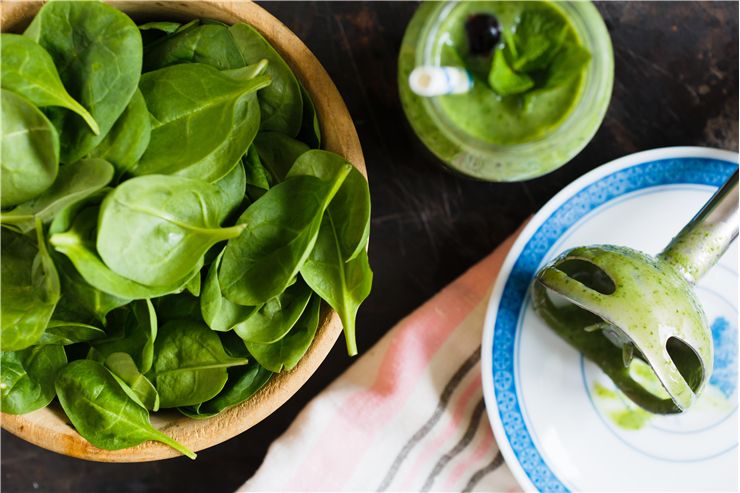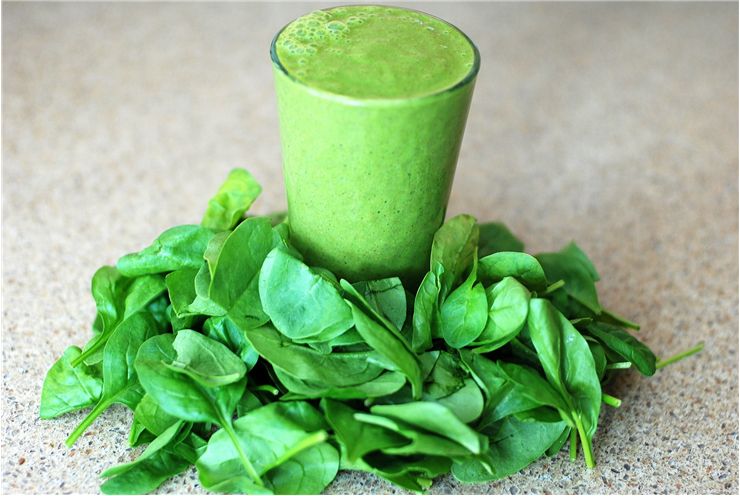Spinach Nutrition Facts and Health Benefits
Spinach is an annual flowering plant whose leaves we use in nutrition since the ancient times. It is a biennial plant that is harvested annually and can survive low temperatures which make it suitable for planting in places with a temperate climate.
Location of the origin of spinach is ancient Persia. From there it crossed to India and from there to ancient China where it is known as a “Persian vegetable.” Saracens brought it to Sicily in the 9th century and Spain in the 12th century. We have written proofs from that time that talk about spinach. Some even call it “the chieftain of leafy greens.” Germany knew about the prickly-seeded type of spinach before the 13th century but the smooth-seeded type (which we sue today) appeared there in the 16th century. England and France were introduced to the spinach in the 14th century and the first known English cookbook from 1390, “The Forme of Cury”, mentions it. Spinach became popular because it was available in the early spring, when not much is, and because it was allowed as food during the Lent. Catherine de' Medici, Queen of France, loved spinach so much that she ordered for it to be served at every meal.
- French soldiers weakened by hemorrhage during the First World War were given wine mixed with the juice of spinach.
- Spinach is ready for harvest after 6 to 7 weeks after it was sown.
- Spinach can even be eaten as a salad but be careful that before any use, you wash spinach in cool water to prevent the risk of the foodborne illness.
- The two most popular types of spinach today are “flat leaf spinach” and “savoy” or “curly leaf” spinach.
- It is not too advisable to reheat spinach because this can convert nitrates into nitrites and nitrosamines with the help of certain bacteria that can appear in pre-prepared nitrate-rich spinach.

- Spinach has 0g of fat, saturated f, and cholesterols so it is an ideal part of a healthy diet of those that try to lose weight.
- Spinach also has flavonoids, phytonutrients that slow down the division of cancer cells in the human stomach and cancer cells of the skin.
- It also has the vitamin C, vitamin E, beta-carotene, manganese, zinc and selenium which are powerful antioxidants which can fight, slow down, or, in some cases even prevent, osteoporosis, atherosclerosis, and high blood pressure.
- Vitamin A in spinach also strengthens the immunity because it affects entry points of the organism where illness can attack the body like mucous membranes, respiratory, and urinary and intestinal tracts. By protecting the mucous membrane of the stomach, spinach decreases the chance of the occurrence of gastric ulcers.
- Beta-carotene, lutein, and xanthene that spinach has are good for eyesight. They protect eyes from the harsh effects of UV, which can cause cataracts.
- Folate, one of the nutrients in spinach, is good against Alzheimer’s disease. Potassium increases blood flow to the brain and with that benefits heightened cognition, concentration, and neural activity. It also regulates blood pressure and helps people who have hypertension.
- Vitamin K retains calcium and, with that, feeds bones with necessary minerals.
- Protein amount found in spinach is high and they, when they are broken into amino acids by enzymes build our muscles, give us the ability to heal wounds, and boost our metabolism.
- Lutein also prevents hardening of arteries and, with that, prevents atherosclerosis, heart attack, and stroke.
- Folate is also essential in the fetus development because it helps in the development of the new nervous system. Vitamin A helps lung development of the fetus during the pregnancy and in a child after the birth.

